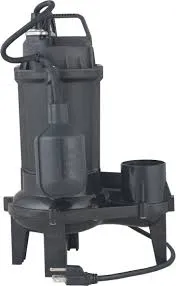English
- Afrikaans
- Albanian
- Amharic
- Arabic
- Armenian
- Azerbaijani
- Basque
- Belarusian
- Bengali
- Bosnian
- Bulgarian
- Catalan
- Cebuano
- Corsican
- Croatian
- Czech
- Danish
- Dutch
- English
- Esperanto
- Estonian
- Finnish
- French
- Frisian
- Galician
- Georgian
- German
- Greek
- Gujarati
- Haitian Creole
- hausa
- hawaiian
- Hebrew
- Hindi
- Miao
- Hungarian
- Icelandic
- igbo
- Indonesian
- irish
- Italian
- Japanese
- Javanese
- Kannada
- kazakh
- Khmer
- Rwandese
- Korean
- Kurdish
- Kyrgyz
- Lao
- Latin
- Latvian
- Lithuanian
- Luxembourgish
- Macedonian
- Malgashi
- Malay
- Malayalam
- Maltese
- Maori
- Marathi
- Mongolian
- Myanmar
- Nepali
- Norwegian
- Norwegian
- Occitan
- Pashto
- Persian
- Polish
- Portuguese
- Punjabi
- Romanian
- Russian
- Samoan
- Scottish Gaelic
- Serbian
- Sesotho
- Shona
- Sindhi
- Sinhala
- Slovak
- Slovenian
- Somali
- Spanish
- Sundanese
- Swahili
- Swedish
- Tagalog
- Tajik
- Tamil
- Tatar
- Telugu
- Thai
- Turkish
- Turkmen
- Ukrainian
- Urdu
- Uighur
- Uzbek
- Vietnamese
- Welsh
- Bantu
- Yiddish
- Yoruba
- Zulu
Telephone: +86 13120555503
Email: frank@cypump.com
Dec . 25, 2024 01:25 Back to list
Self-Priming Slurry Pump for Efficient Fluid Transfer and Handling Solutions
Understanding Self-Priming Slurry Pumps A Comprehensive Overview
Self-priming slurry pumps are an essential piece of equipment used in various industries for the efficient transfer and handling of slurries, which are mixtures of solids and liquids. These pumps are designed to operate effectively even in challenging conditions, making them indispensable in sectors such as mining, construction, wastewater treatment, and chemical processing. In this article, we will explore the mechanics, advantages, applications, and maintenance of self-priming slurry pumps.
Mechanics of Self-Priming Slurry Pumps
Self-priming slurry pumps are engineered to create a vacuum that allows them to draw liquid from a lower level without needing manual priming. This feature is particularly useful in scenarios where the fluid source is beneath the pump's position. The pump typically consists of a specially designed impeller and volute casing that work together to generate the necessary suction.
When the pump operates, the impeller spins rapidly, creating low pressure in the pump casing. This vacuum effect draws the slurry into the pump. As the impeller continues to rotate, it pushes the mixture out through the discharge outlet. The self-priming mechanism ensures that the pump can maintain its operation even if the fluid level fluctuates or drops.
Advantages of Self-Priming Slurry Pumps
1. Ease of Use One of the most significant benefits of self-priming slurry pumps is their user-friendly operation. Unlike traditional pumps that require manual priming, self-priming models can automatically prime themselves, saving time and labor costs.
2. Versatility These pumps can handle a wide range of slurry types, including those with abrasive solids, corrosive chemicals, and varying viscosities. This flexibility makes them suitable for numerous applications across different industries.
3. Reduced Downtime The ability to self-prime means that these pumps can quickly resume operation after maintenance or when the fluid level changes. This characteristic minimizes downtime and enhances overall productivity.
self priming slurry pump

4. Increased Efficiency Self-priming slurry pumps are designed to operate efficiently even in difficult conditions. Their robust construction allows them to withstand harsh environments while maintaining optimal performance.
Applications of Self-Priming Slurry Pumps
Self-priming slurry pumps are utilized in various applications
- Mining In the mining industry, these pumps transport slurry from one location to another, often dealing with thick, abrasive materials that can wear down standard pumps. - Construction During construction projects, self-priming pumps are employed to remove excess water and slurry from excavation sites, ensuring a safe and dry work environment. - Wastewater Treatment These pumps are crucial in wastewater treatment facilities, where they manage the movement of sludge and other solid-liquid mixtures. - Chemical Processing In chemical plants, self-priming pumps handle corrosive and viscous fluids, providing a reliable solution for transferring diverse chemical slurries.
Maintenance of Self-Priming Slurry Pumps
To ensure the longevity and performance of self-priming slurry pumps, regular maintenance is essential. Some key maintenance practices include
- Routine Inspections Frequently check for wear and tear, leaks, and any unusual noises during operation. Early detection of issues can prevent costly repairs. - Cleaning Periodically clean the pump to remove debris or buildup inside the casing and impeller. This practice helps maintain efficiency and prevents blockages. - Lubrication Ensure that all moving parts are adequately lubricated to reduce friction and wear. Follow the manufacturer's recommendations for the appropriate type and frequency of lubrication. - Monitor Performance Keep track of pump performance metrics, such as flow rates and pressure levels. Any significant deviations can indicate a problem that requires attention.
Conclusion
Self-priming slurry pumps play a vital role in various industries by providing a reliable and efficient means of transporting slurries. Their self-priming capability, versatility, and resilience make them a preferred choice in challenging environments. By understanding their mechanics, advantages, applications, and maintenance requirements, operators can ensure optimal performance and longevity of these essential pumps. As technology continues to advance, we can expect further improvements in efficiency and effectiveness, solidifying the importance of self-priming slurry pumps in industrial processes.
-
Horizontal Split Case Pump with GPT-4 Turbo | High Efficiency
NewsAug.01,2025
-
ISG Series Pipeline Pump - Chi Yuan Pumps | High Efficiency, Durable Design
NewsAug.01,2025
-
Advanced Flue Gas Desulfurization Pump with GPT-4 Turbo | Durable & Efficient
NewsJul.31,2025
-
ISG Series Vertical Pipeline Pump - Chi Yuan Pumps | Advanced Hydraulic Design&Durable Construction
NewsJul.31,2025
-
ISG Series Vertical Pipeline Pump - Chi Yuan Pumps | Energy Efficient & Low Noise
NewsJul.31,2025
-
pipeline pump - Chi Yuan Pumps Co., LTD.|High Efficiency&Low Noise
NewsJul.31,2025










